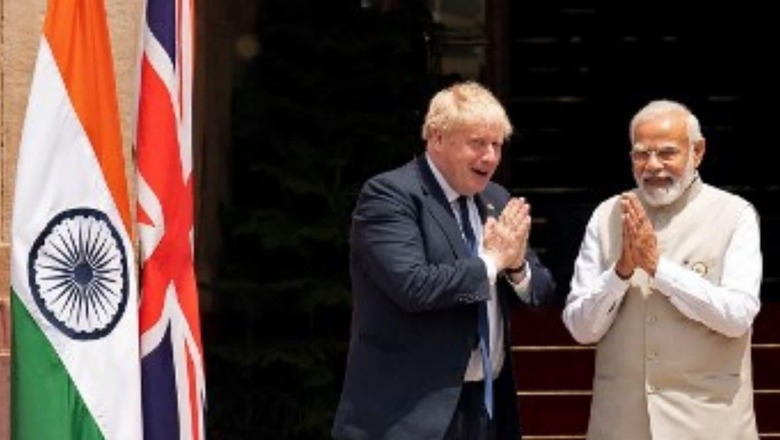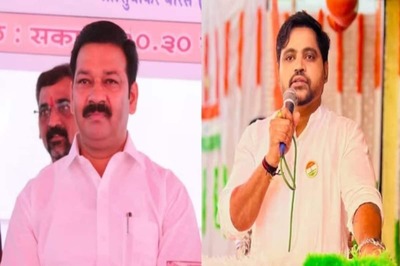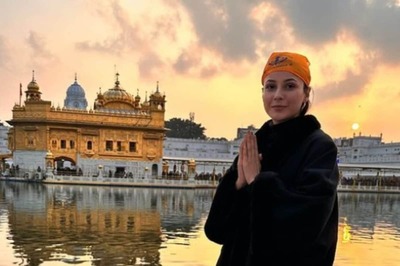
views
With the UK-India week on the cusp, it becomes pertinent to discuss how the United Kingdom and India have weathered rough storms during the pandemic years to come out closer than ever. It is now abundantly clear that the UK-India bilateral relationship has contributed to saving billions of lives across the world, most importantly with timely vaccine development and manufacturing.
In the early days of the pandemic, India stood by the UK, exporting timely personal protection equipment, masks and essential pharmaceutical drugs in large quantities. The gesture was generously reciprocated when the UK, during the Delta wave in April 2021, sent surplus vital oxygen generation equipment, oxygen concentrators and ventilators to India.
In early 2020, once it was clear that scientists at University of Oxford in partnership with AstraZeneca were working on a Covid-19 vaccine, India’s Serum Institute (SII) was one of the early movers to seal a manufacturing deal.
It is this three-way partnership that has now been at the helm of having already delivered over 2 billion affordable, effective vaccines which have now been administered to not only Indians but to folks in many low-income countries as part of India’s vaccine export program: vaccine maitri and under GAVI led COVAX.
The challenges of poorer countries to administer expensive mRNA vaccines are manifold – they simply don’t have the infrastructure and cold storage capabilities to transport mRNA vaccines which need sub-zero temperatures. Thus, even if they receive them for free under the COVAX program, challenges to administer them are unfathomable.
However, global vaccine supply hit a hurdle when India banned vaccine exports to the COVAX program during the Delta wave, only to allow them to resume in October 2021. As of today, India has the capacity to manufacture over 5 billion affordable COVID-19 vaccines annually. With passing time, it is these AstraZeneca-SII vaccines which hold the key to help secure a major part of the developing world.
India-UK bilateral ties took quite a hit when the UK refused to initially allow travellers who had taken the India-made AstraZeneca shot or recognize the Indian QR-coded vaccine certificates. The Indian side reciprocated with similar restrictions on UK travellers. The diplomats of both countries under the strong leadership of Prime Minister Modi and Prime Minister Johnson ensured that tensions don’t escalate, finding acceptable solutions fairly quickly.
The Russia-Ukraine has been yet another point of contention on both sides. With India’s position of insistence on immediate cessation of war but refusing to take sides and UK’s clear support to Ukraine, the ties were perceived to have gone through deep strain.
However, when PM Johnson visited India a couple of months ago, the deep bond between him and PM Modi on display silenced the critics who had begun to question the stability of the India-UK relationship. With a strong trade deal between our two nations on the cards likely to be signed by the end of the year, the UK-India relationship demonstrates how countries despite differences can indeed continue to work in mutual interest towards global betterment by simply agreeing to disagree on sticky issues.
Today, India is the sixth largest economy in the world, following the UK, which is ranked at the fifth position with a mere 10 billion dollar difference. As per growth projections, India’s GDP is projected to grow at 6.2% this year, the fastest in the world in contrast to the UK whose growth projections stand at 0%.
In terms of demographic dividend as well, India expects to add over 183 million people in the working age group of 15-64 years between 2020-2050, many of whom will inherently move to various countries seeking work and contributing to their economies respectively.
It is certainly true that owing to the large population size of about 1.4 billion as compared to UK’s 70 million (now under steep decline), India’s per capita income remains low. However, with focused efforts of the Indian government to become a global manufacturing hub, combined with the rate of GDP growth, India’s per capita income is set to change within the next decade as well.
It, thus, becomes impossible for the world to ignore India; for it is India which is turning out to be an alternative to China to provide not only goods – both essential as well as non-essential but also skilled labour and services.
Countries like the United Kingdom who have been India’s natural partners, historically understand the value of this partnership and how it can be harnessed for bilateral advantages. Going forward, as global supply chains which saw massive disruptions during the pandemic and the subsequent war, are set to re-align, India seems to emerge as a credible, dependable partner for many nations – a fact that simply cannot be overlooked anymore!
The writer is a policy and communications strategist. A Nation to Protect: Leading India Through the Covid Crisis is her third book. The views expressed in this article are those of the author and do not represent the stand of this publication.
Read all the Latest News , Breaking News , watch Top Videos and Live TV here.




















Comments
0 comment